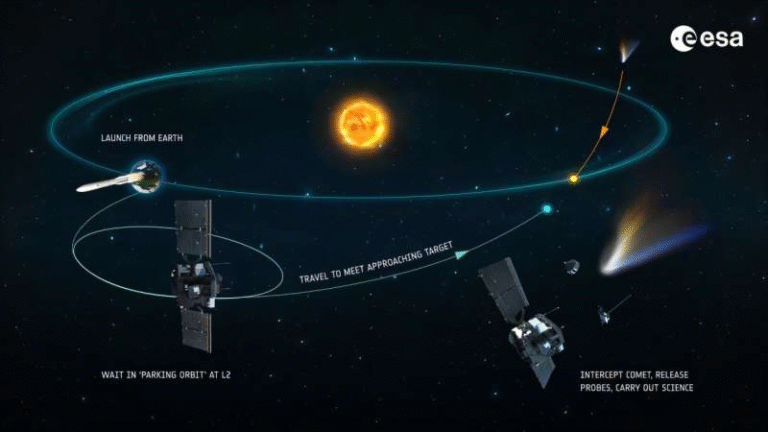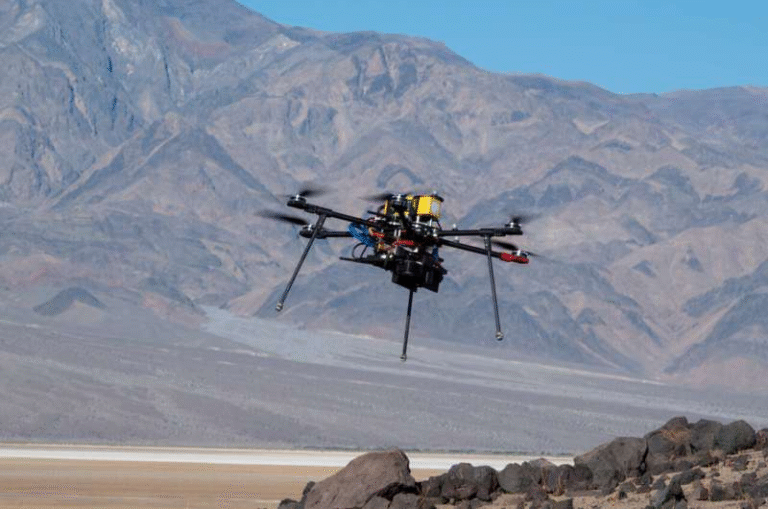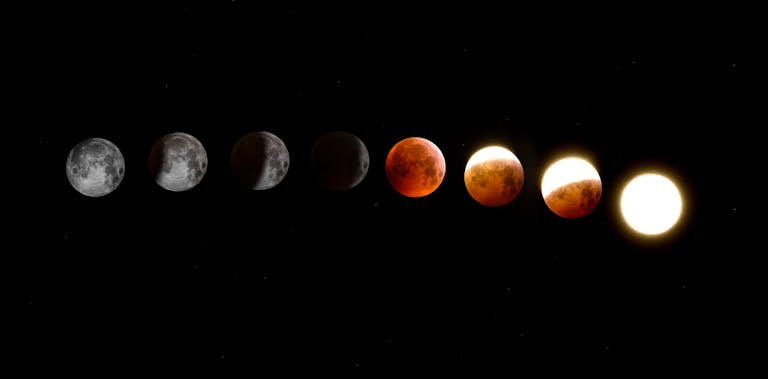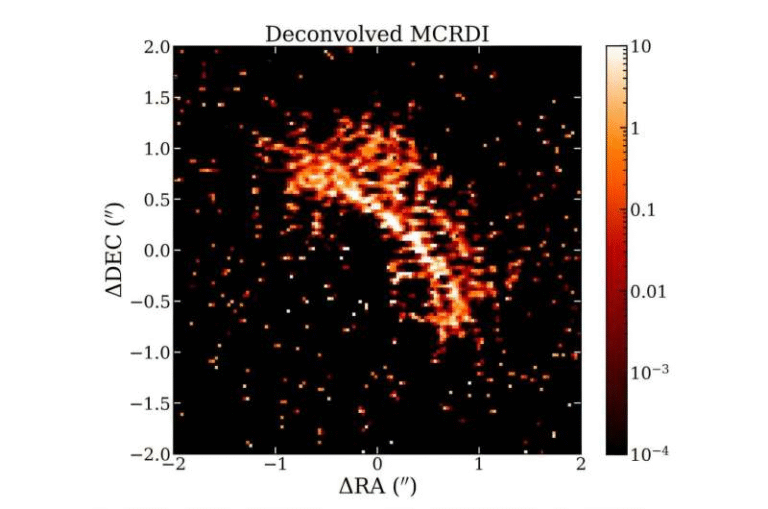NASA Detects New Interstellar Visitor: Comet 3I/ATLAS and the Debate Around Alien Probes

Astronomers have confirmed the arrival of a new interstellar visitor in our Solar System, named 3I/ATLAS (also designated C/2025 N1 (ATLAS)). This marks only the third time in recorded history that an object from beyond our Solar System has been detected passing through. The discovery is generating intense interest, not only because of the comet’s unique physical characteristics but also due to speculation that it could, in theory, represent alien technology.
In this article, let’s break down all the specific details about 3I/ATLAS, what scientists have observed so far, the controversial alien probe hypothesis, and also provide additional context on interstellar objects and how we detect them.
Discovery of 3I/ATLAS
- The comet was discovered on July 1, 2025, by the Asteroid Terrestrial-impact Last Alert System (ATLAS) telescope in Río Hurtado, Chile.
- Orbital analysis revealed that it follows a hyperbolic trajectory, which means it is not bound to the Sun and is simply passing through our Solar System. This firmly places it in the category of interstellar objects, along with 1I/ʻOumuamua (2017) and 2I/Borisov (2019).
- At the time of discovery, 3I/ATLAS was already showing features typical of comets, such as a dusty coma (a cloud of gas and dust surrounding its nucleus).
Speed and Size
3I/ATLAS is moving at extraordinary speeds:
- Its inbound velocity relative to the Sun is about 60 km/s (approximately 245,000 km/h or 37 miles per second).
- This makes it the fastest object ever observed within our Solar System.
- Early estimates of its size suggested a nucleus up to 20 kilometers across. However, later observations by the Hubble Space Telescope constrained the size to an upper limit of about 5.6 kilometers, with possibilities that it could be as small as a few hundred meters to 1 kilometer.
- Its nucleus appears to be surrounded by a teardrop-shaped dust cocoon, further supporting cometary activity.
Trajectory and Closest Approaches
- 3I/ATLAS has a retrograde orbit with a small inclination of about 5° relative to the ecliptic.
- Its path is remarkable because it passes unusually close to the orbital planes of Venus, Mars, and Jupiter.
- The comet will reach its perihelion (closest approach to the Sun) on October 29–30, 2025.
- Importantly, it will not come closer to Earth than about 1.6 astronomical units (roughly 240 million kilometers), so there is no danger to our planet.
Observations from Major Telescopes
Since its discovery, observatories worldwide have focused on 3I/ATLAS, including Hubble, Gemini South, the James Webb Space Telescope (JWST), and the Swift Observatory.
Evidence of Activity
- Observations confirm that 3I/ATLAS is an active comet. Sublimation of ices is producing a coma and a developing tail.
- JWST spectroscopy has revealed that its coma is unusually rich in carbon dioxide (CO₂). The CO₂/H₂O mixing ratio is about 8 ± 1, far higher than typically seen in comets from our own Solar System.
- Water activity has also been detected. The Swift Observatory identified hydroxyl (OH) emissions, implying water sublimation at a rate of about 1.35×10²⁷ molecules per second, or roughly 40 kilograms of water per second.
- Dust loss rates have been measured between 0.3 and 4.2 kilograms per second, showing moderate but increasing activity.
- Polarimetric observations (which measure how light scatters off dust) show an unusual negative polarization branch as deep as –2.7%. This behavior is unlike typical Solar System comets, possibly pointing to unique dust grain structures or compositions.
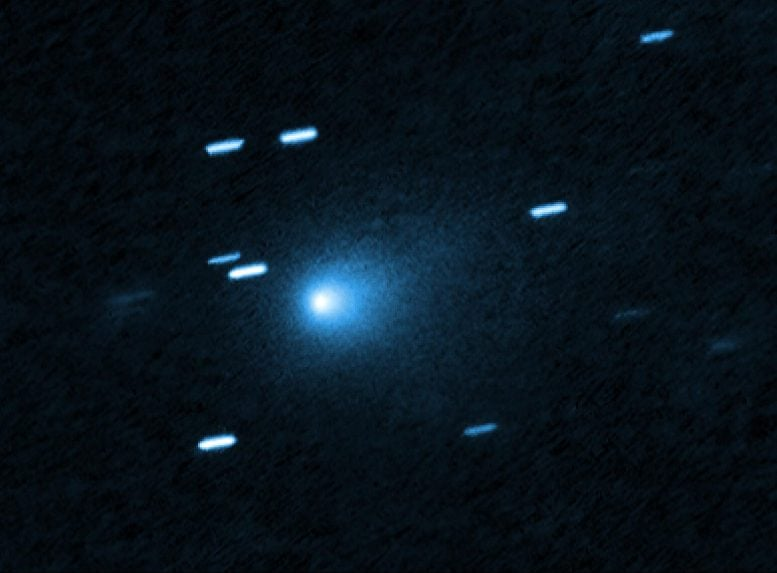
Size Uncertainties
- The brightness seen from Earth is a mix of nucleus reflection and coma scattering, making it difficult to measure the true size of the solid body.
- Current constraints place the size somewhere between hundreds of meters and 5.6 kilometers.
What Makes 3I/ATLAS Different?
The comet’s composition and activity suggest it may have formed under very different conditions than comets in our Solar System:
- The high CO₂ abundance indicates it likely formed near the CO₂ ice line of its parent star system’s protoplanetary disk, or it has undergone different radiation exposure compared to our comets.
- TESS (Transiting Exoplanet Survey Satellite) data suggests it may have been faintly active as far away as 6.4 astronomical units from the Sun (around May 2025). At such distances, water ice would remain frozen, which means other volatiles like CO₂ must have been driving this early activity.
The Alien Probe Hypothesis
One of the most controversial discussions around 3I/ATLAS is the claim by Harvard astrophysicist Avi Loeb and colleagues Adam Hibberd and Adam Crowl. In a paper published on the arXiv preprint server, they ask whether 3I/ATLAS could be alien technology.
Their Key Points
- Unusual trajectory: They note that the comet’s orbital path brings it improbably close to Venus, Mars, and Jupiter in sequence. They calculate the odds of such a trajectory happening by chance at about 0.005%.
- Size concerns: If the nucleus is indeed at the larger end of estimates (close to 20 km), this would make it statistically unlikely to encounter such a massive interstellar object.
- Cometary activity uncertainty: At the time of their writing, clear evidence of gas-driven activity was limited. They argued that the lack of definitive cometary signs could leave room for the hypothesis of an artificial object.
- Possibility of interception: Their paper also discusses the feasibility of intercepting such interstellar objects with spacecraft. They suggest it would require nuclear thermal propulsion and high launch energy to catch up with something moving this fast.
Scientific Response
Most of the astronomy community strongly leans toward a natural explanation:
- As more observations accumulate, clear cometary activity has been confirmed (including CO₂ and water sublimation).
- There is no evidence of artificial propulsion, maneuvering, or radio emissions.
- NASA, ESA, and independent observatories emphasize that 3I/ATLAS looks like a volatile-rich comet, albeit with unusual features compared to local comets.
- Many astronomers caution that while considering exotic ideas is interesting, extraordinary claims require extraordinary evidence. So far, all data is consistent with a natural origin.
Broader Context: Interstellar Visitors
3I/ATLAS is only the third interstellar object confirmed:
- 1I/ʻOumuamua (2017) – A cigar-shaped object with unusual acceleration, which sparked debate and speculation about alien technology.
- 2I/Borisov (2019) – A more typical comet, with clear activity and chemistry similar to Solar System comets.
- 3I/ATLAS (2025) – Now under detailed observation, showing strong CO₂ activity and unique dust properties.
These discoveries suggest that interstellar objects might be fairly common, but our detection technology has only recently become capable of spotting them.
How We Detect and Study These Objects
- Interstellar objects are identified by their hyperbolic orbits. A bound orbit around the Sun is elliptical, but a hyperbolic trajectory shows they came from beyond and will leave again.
- Detection is difficult because smaller objects reflect little sunlight. Current technology allows us to track bodies as small as 10–20 meters only as far out as Jupiter’s distance.
- Human probes like Voyager 1 and 2, Pioneer 10 and 11, and New Horizons are examples of how artificial probes can eventually leave our Solar System. By extension, alien civilizations (if they exist) could theoretically send their own probes.
Open Questions
Scientists are watching closely for:
- More precise nucleus size measurements.
- How the coma composition evolves as it gets closer to the Sun.
- Whether the dust properties remain unusual compared to Solar System comets.
- Signs of non-gravitational forces affecting its trajectory, which could be caused by outgassing or, in theory, something artificial.
- Opportunities for future missions. While intercepting 3I/ATLAS is unrealistic with current technology, planning ahead for the next interstellar visitor could be possible.
Conclusion
For now, the most likely explanation is that 3I/ATLAS is a natural interstellar comet, an icy remnant ejected from another star system billions of years ago. Its unusual composition and activity make it an exciting object of study, and it is already helping scientists refine how we track and analyze interstellar visitors.
The alien probe idea, while fascinating, remains highly speculative. Still, exploring such possibilities encourages us to expand how we think about objects that wander into our Solar System.
What’s certain is that 3I/ATLAS offers a rare chance to learn more about the building blocks of distant planetary systems, and perhaps even how common interstellar travelers really are.
Reference:
Hibberd, A., Crowl, A., & Loeb, A. (2025). Is the Interstellar Object 3I/ATLAS Alien Technology? arXiv:2507.12213

